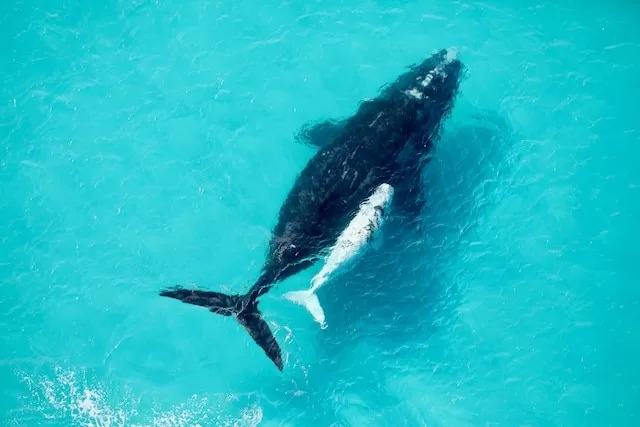Southern right whale numbers on Australia’s southern coastline could be at a 16-year low, according to a researcher who conducts an annual aerial survey.
Key points:
- Southern right numbers between Fremantle and Ceduna are down by more than 200 on last year
- There are hopes that a strong breeding season will see a population boost next year
- An Eyre Peninsula tourism operator says bird numbers also appear to be low
Every August a southern right whale census is undertaken between Fremantle in Western Australia and Ceduna in South Australia.
Pilot Jenny Schmidt and photographer Andrew Halsall have been conducting the survey – which occurs while whales are moving towards the Australian coast from Antarctica to breed in warmer water – since 1997.
Ms Schmidt said 2023 has been one of the worst years for whale counting since she started doing the census.
“Numbers are very low — probably the lowest since 2007,” Ms Schmidt said.
About 320 whales were counted.
About 84 were cow-calf pairs and the rest were unaccompanied calves.
Last year 530 whales were recorded, 32 of which were unaccompanied adults.
‘The bay feels empty’
Tourism operators agree there has been a decline in whale numbers during watching season.
Rod Keogh of Fowlers Bay, SA, says this is the first time in the 15 years his business has been running that a whale has not taken up residency in the bay for the season.
“It’s now managing expectations,” he said.
“We’re in the middle of our whale season now and we do our whale count on the 27th of August every year, because that’s when we see our peak numbers, but there have been no whales here in the bay for the last 10 days.
“It’s a bit devastating.
“I enjoy the whales myself, so just to have the whales not here, I mean, one, the bay feels empty, but 15 years of watching the whales and you get a year like this.
Southern rights are being spotted so infrequently that Mr Keogh’s tours have become more focused on humpbacks.
“We put the hydrophone in, listening to the humpbacks, and about 85 per cent of the time we hear the humpbacks singing in the distance,” he said.
“But it can be a bit difficult to find them.”
‘Going through a desert’
Ms Schmidt hopes an increase in unaccompanied adult whales may boost whale numbers for next year.
“I guess the positive thing this year – which is different to last year – is that there were a lot more unaccompanied adults, so adults that are just up here to mate,” she said.
“Hopefully next year the cow-calf pair numbers will be a lot higher anyway.”
It’s not just the whales that are missing from South Australia’s west coast.
“There are no seabirds,” Mr Keogh said.
“There’s nothing out there at all — it’s like going through a desert.
“You know, it’s generally a consistent thing here over the years — you leave the shore, you go out in the middle of the bay, and you’ve got your gannets, your terns your petrels, an odd albatross every now and then.
“But you go out now and you’re lucky to find one tern or a seagull.”
Find more local news
Browse for your location and find more local ABC News and information
